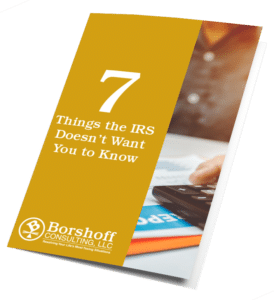With the virtual world being bigger than ever before, there are more and more taxpayers who work out of their homes. Many of these people own small businesses or are freelancers and may even qualify for the home office deduction. Often the words “home office deduction” make taxpayers fear it as an audit trigger. However, if you’ve earned it, take advantage of this break from the IRS. Just follow the requirements and report it correctly.
If you are a small business owner or freelancer, you may be able to save money on your taxes by taking the home office deduction, and you should do it if you qualify. You must meet the IRS requirements though, meaning you must use part of your home regularly and exclusively for business-related activity, and your home office must be the principal place of business.
For those who qualify, the IRS allows you to write off expenses like rent, utilities, real estate taxes, repairs, maintenance, and other business-related expenses. Read on to find out the exact requirements of the home office deduction, the methods of calculation used to claim it, and how to report it on your annual tax return.
What are the Requirements of the Home Office Deduction?
To claim the home office deduction, you must meet specific requirements. The two basic requirements for your home office to qualify as a deduction are:
- Regular and Exclusive Use
- Principal Place of Business
The portion of your home that is used for a home office must be exclusively and regularly for your business. Is your home office used for your home business or for a hobby also? This is the exclusive and regular use requirement.
Your home office must also be the main location for your business, or it must be the place where you regularly meet with clients or customers. This is the principal place of business requirement.
These are the main two requirements for claiming this deduction. It’s important to understand what you must do to qualify for this tax deduction.
What Does Regular and Exclusive Use Mean?
Your home office must be used for conducting business. Usually, a home office is a separate room. However, the office can be a section of a room if the division is clear. You must be able to show that personal activities are not a part of that business area though.
An example would be a home office that is used as a guest room. If you use your home office as a guest room or as a playroom for your children, it does not qualify, so make certain you understand the rules before claiming this deduction.
Per the IRS, “You must regularly use part of your home exclusively for conducting business. For example, if you use an extra room to run your business, you can take a home office deduction for that extra room.”
However, the exclusive use requirement does not mean that you cannot take a personal phone call in your home office. Provided the personal activities do not invade the home office more than they would in a normal place of business, you are okay, but it’s always best to err on the side of caution, so don’t abuse the rules of the home office.
Are There Any Special Rules or Exceptions?
There are two exceptions to the exclusive-use requirement. That test does not apply if you use part of your home to provide daycare services for children, the elderly, or handicapped individuals or if you use part of your home to store product samples or inventory you sell for your business.
What Does the Principal Place of Business Mean?
Your home must be the principal location of your business or it must be the place where you regularly meet with customers or clients. You must be able to show that you use your home as your principal place of business.
If you conduct business at a location outside of your home but also use your home substantially and regularly to conduct your business, you may qualify for the home office deduction per the IRS.
You are allowed to deduct expenses for a separate free-standing structure like a studio, garage, or barn if you use it regularly and exclusively for your business.
What Types of Business Expenses Can I Deduct?
Some of the business expenses you can deduct include direct business expenses, indirect business expenses, interest and property taxes, and rent. Direct business expenses include amounts spent to repair or maintain the home office. Indirect business expenses include utility bills, homeowner insurance, homeowner association fees, security, and general repairs and maintenance.
For a full listing of the types of expenses that you can deduct, refer to the IRS Publication 587: Business Use of Your Home.
How is the Deduction Calculated?
The calculations for the home office deduction are based on the percentage of your home used for the business (the actual expense method) or the square footage (the simplified method).
How Do I Calculate the Actual Expense Method?
The business percentage of your home method measures the square footage devoted to your home office to find out what percentage it is of the total area of your home. The actual expense method deducts direct expenses in full; indirect expenses are deductible based on the percentage of your home used for business.
An example of this method would be a home office that measured 150 square feet in a home that measured 1,000 square feet. Your business percentage would be 15% (150 square feet divided by 1,000 square feet = .15). Using the percentage method is the more exact method of calculating your home office deduction amount.
The way this works on indirect expenses is that you would be able to deduct 15% of the costs of running the business portion of your property, so since your home office takes up 15% of your home, you can deduct 15% of your utility bills, homeowner’s insurance costs, homeowner association fees, security, and general repairs and maintenance.
For direct expenses, you can deduct them in full. So, if you spent $500.00 for the direct expense of painting your home office, you would get to deduct $500.00 for your direct expenses.
If your total indirect expenses were $5,000.00 and your home office was 15% of your home, your indirect expense amount would be $750.00 ($5,000.00 X .15 = $750.00). So your total deductions would total $1,250.00 ($750.00 indirect expenses plus $500 direct expenses).
How Do I Calculate the Simplified Method?
The square footage method is considered to be “the simplified method.” This method uses a prescribed rate multiplied by the allowable square footage used in the home. If your home office is 300 square feet or less, the IRS gives you a deduction of $5.00 per square foot of your home that is used for business. The maximum amount is $1,500.00 for a 300-square foot home office space.
An example of this method would be a home office that measured 150 square feet. Since the rate is $5.00 per square foot, the deduction would be $750.00 (150 square feet multiplied by $5.00).
While this is the easier method to calculate your deduction, it’s best to calculate it using both methods to find out which will yield you the best tax advantage. The simplified method often works well for small home offices while the actual expenses method is better if the home business takes up a large part of the home.
What Kind of Documentation Do I Need to Maintain?
Make sure you keep good records in case you are audited. Here are some of the documents you need to have on hand in the event of an audit regarding your home office deduction:
- Receipts for office furniture
- Receipts for home office equipment and supplies
- Utility bills
- Property tax proof of payments
- Maintenance and repair invoices
Are you facing an audit and unsure what documents you need? Be sure to have on hand these documents in order to be properly prepared for an audit. Not sure what to expect with an audit? Check out our handy guide that will help prepare you.
Conclusion
If you are a small business owner or a freelancer who works from home, you can save money on your taxes by taking the home office deduction. There are strict requirements, and you need to keep excellent, detailed records, but if you qualify, it’s worth taking the deduction on your tax return.
If you qualify for the home office deduction, the tax savings are worth the extra work required to qualify. If you are unsure as to whether you qualify or how much you can write off, contact Borshoff Consulting! The rules on tax deductions for a home office are often hard to digest. We can help you with every part of your taxes.
We specialize in tax returns, financial planning, and more. To see how we can help out with your tax returns, contact us today! Borshoff Consulting can help you with one-on-one audit assistance, support, and representation. You can trust Indiana’s Tax Expert!





